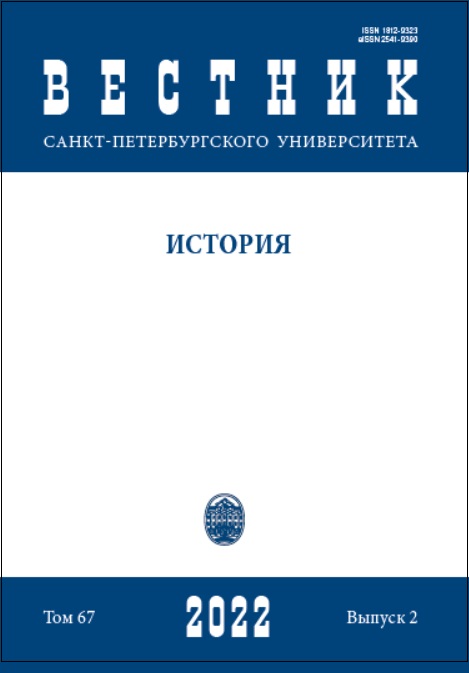Matthias Bel and the Russian Academic Milieu during the Enlightenment
DOI:
https://doi.org/10.21638/11701/spbu02.2022.209Abstract
Since the 1950s the Czech, Slovak, and Hungarian scholars have carried out research aimed at analysing the personal correspondence of Matthias Bel, a Hungarian polymath and one of the most significant intellectuals of the first half of the 18th century in the Habsburg monarchy. Analysis of Belʼs letters has revealed many interesting facts about Belʼs life as a Baroque scholar. It has also brought to light the sphere of his collaborations with various colleagues, both domestic and foreign ones. Amongst Belʼs contacts, there were also German scientists from the St. Petersburg Academy of Sciences, most importantly, Gottlieb Siegfried Bayer and Christian Goldbach. With the recent emergence of the projects supporting the publication of the bilingual Latin-Slovak translations of Belʼs major work Notitia Hungariae novae historico geographica, historians have been seeking for to widen a range of its possible interpretations or to compare Belʼs opus magnum with similar works of his contemporaries. The study thus focuses on the analysis of a trace, which Belʼs communication left in the Russian historical milieu in the first half of the 18th century. On the basis of historical sources, and with corresponding relevant scholarship, a connection with Vasilii Nikitich Tatishchevʼs work Istoria rossiiskaia is outlined. With Bayer being in contact with both Bel and Tatishchev, a rather unexpected bridge was built between the Hungarian and Russian science in the era of the early Enlightenment. The aim of the study is to introduce new, and yet unpublished discoveries about the work of Matthias Bel and Vasilii Nikitich Tatishchev.
Keywords:
Matthias Bel, Vasilii Nikitich Tatishchev, Gottlieb Siegfried Bayer, St. Petersburg Academy of Sciences, correspondence, 18th century
Downloads
References
References
Downloads
Published
How to Cite
Issue
Section
License
Articles of "Vestnik of Saint Petersburg University. History" are open access distributed under the terms of the License Agreement with Saint Petersburg State University, which permits to the authors unrestricted distribution and self-archiving free of charge.





